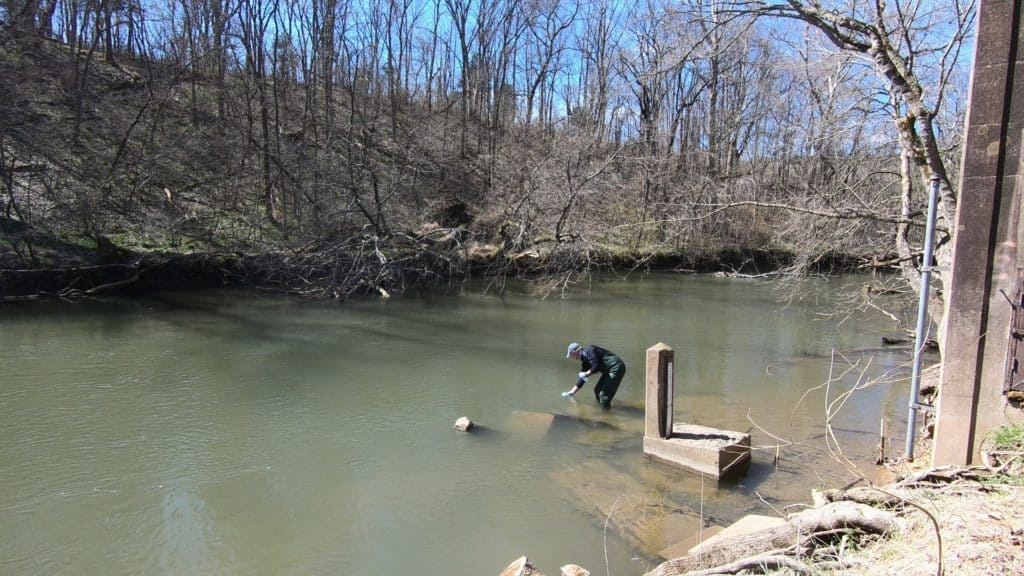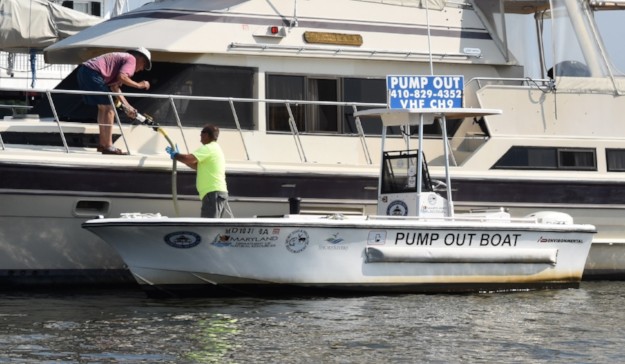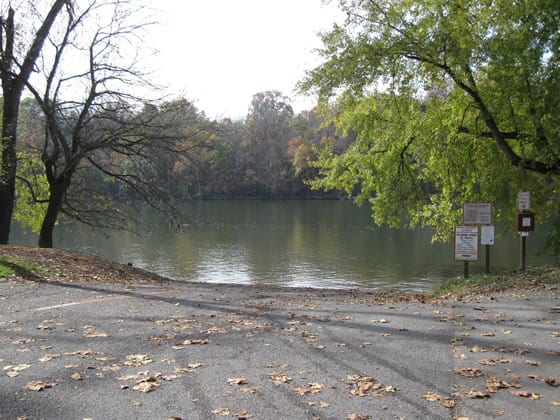On March 26, while much of the world had shut down, Upper Potomac Riverkeeper Brent Walls was in the field. He waded into Antietam Creek to fill a vial, kayaked to a wastewater plant’s effluent source for another, and hiked to a second effluent pipe for a third. He shipped the samples to a lab.
Walls was testing for “forever chemicals” or PFAS, polyfluoroalkyl substances. PFAs refer to a group of over 5,000 chemicals found in everyday items. PFAS keeps your pans non-stick and waterproofs your rain jacket. It’s
also in the firefighting foam that military bases or airports use.
When we wash dishes or clean clothes, PFAS drain to treatment plants and into waterways, or even get dumped directly. Once there, they stick around. PFAS don’t break down, earning their “forever” nickname, accumulating inside animals and humans instead.
This can be a big problem. Studies from the CDC have found that high levels of PFAS in humans may lead to health concerns such as higher cholesterol levels, high blood pressure in pregnant women, and a greater risk of kidney or testicular cancer.
When Walls got the PFAS results back, the numbers startled him. The EPA has a health advisory – not a regulation – that PFAS levels in drinking water shouldn’t exceed 70 parts per trillion (ppt). The effluent draining into the Antietam was much higher: 138.8 ppt and 81.8 ppt from the two plants.
Even at the creek site, with no obvious sources of PFAS, the results were 13.4 ppt. If the numbers were this high in the Upper Potomac, Walls wondered, what about near DC, Baltimore, or other industrial sites?
Right now, no one knows, because so little testing has been done. Even though wastewater plants are a major source, testing is limited, which “primarily extends from the fact that PFAS isn’t considered toxic
by the federal government,” Walls explains.
Without federal standards, states have had to pick up the slack. “We are still in the infant stage in Maryland,” Walls remarked. “We are still identifying what the problem is and how widespread it is.”
In DC, a study from the Environmental Working Group found total PFAS levels in DC drinking water to be 21.7 ppt – below the EPA’s guidance but far above 1 ppt, the Group’s limit.
Walls and his colleagues aim to expand their testing. Besides wastewater plants, another possible source is biosolids, or the leftover sludge from wastewater treatment. Biosolids are nutrient-rich and can be used as fertilizer. Biosolids aren’t tested for PFAS, and studies have found that PFAS can concentrate within it. Once on fields, PFAS can wash back into water and even leech into crops, with huge potential health implications.
But there are business implications, too. “If we start testing PFAS in biosolids,” Walls says, “it might render the biosolids industry not profitable.”
Walls encourages people to educate themselves on PFAS, install a charcoal filter on their tap, and pressure Maryland to create PFAS standards.
“We are going to come to a point,” Walls concludes, “where Maryland has to make a decision as to what it’s going to do about this.”
-Emma Johnson




